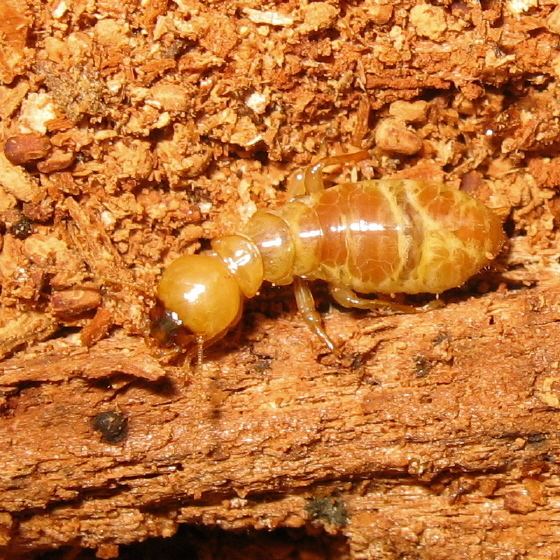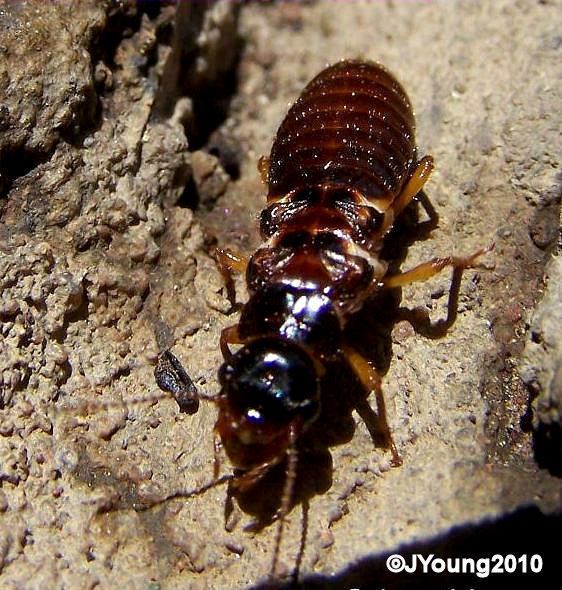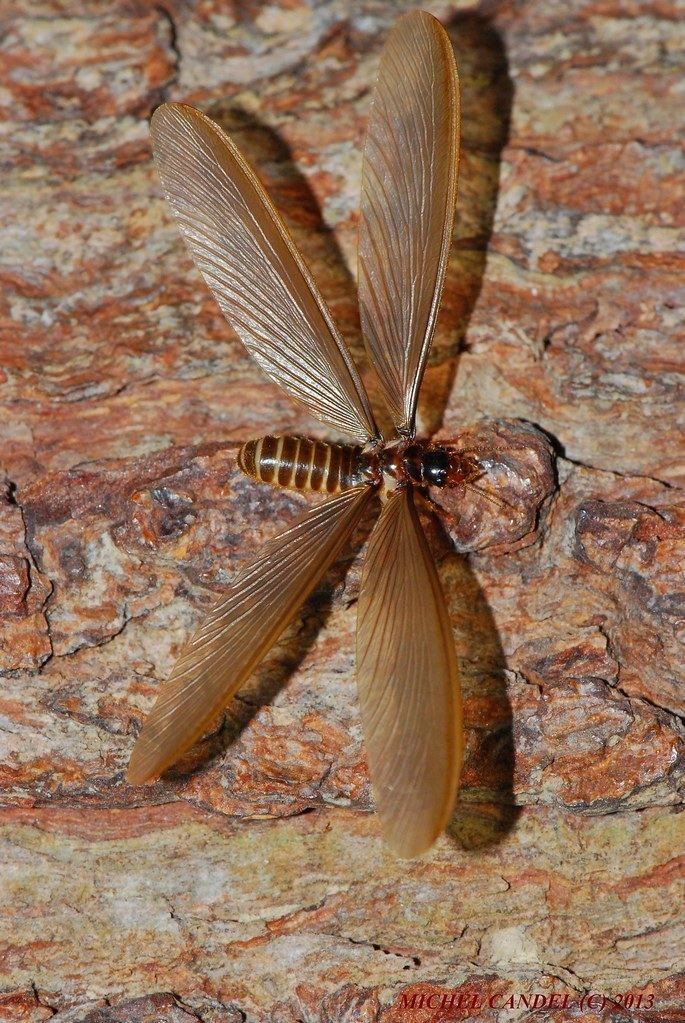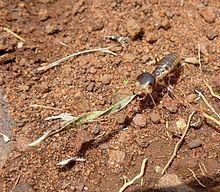Higher classification Termite Order Termite | Rank Family | |
 | ||
Similar Termite, Serritermitidae, Kalotermitidae, Insect, Termopsidae | ||
The harvester termites are an ancient, Old World family of termites, Hodotermitidae. They are distinguished by the serrated inner edge of their mandibles, and their functional compound eyes which are present in all castes. They forage for grass at night and during daylight hours, and pigmented workers are often observed outside the nest. Their range includes the deserts and savannas of Africa, the Middle East and Southwest Asia. Their English name refers to their habit of collecting grass, which is not unique to the family, though.
Contents

Genera

The family consists of three extant genera and some 18 to 19 species. Anacanthotermes is found in deserts and semideserts of North Africa, the Middle East and Southwest Asia, including Baluchistan and southern India. Hodotermes has a vast range from Palaearctic North Africa, through the East African savannas to the karroid regions of southern Africa. Microhodotermes is a genus of desert specialists in the Namib, Kalahari and Karoo, where their ranges overlap with Hodotermes.
Though the dampwood termites are sometimes included with the harvester termites, they are generally viewed as distinct lineages which merely retain plesiomorphies of the more basal Isoptera.
Nests

They nest by excavating in the soil, unlike the Termopsidae and Kalotermitidae. In the case of Hodotermes mossambicus, the diffuse subterranean system of spherical hives may be located from near the surface to more than 6 m deep. The hives may be 60 cm wide and are interconnected by galleries. Loose particles of excavated soil are brought to the surface and dumped at various points around the nest. Colonies of Microhodotermes viator produce initially small, conical mounds on soil with sufficient clay content.
Breeding
Soon after rain showers, swarms of flying termites, alates or winged reproductives emerge from their underground nests during summer evenings. When sufficiently distant from the parent nest, they land, shrug off their wings and scout about for a mate. The pair then excavates a burrow to start a new colony. A week after swarming, the female lays her first eggs which are tended by the couple, a task soon taken over by the maturing workers. After some four months, the nest is sufficiently developed to send foraging workers to the surface. For the next few years, most of the eggs develop into workers and a small number of soldiers. When the nest is sufficiently large, winged reproductives again develop.
Diet and feeding
The workers of M. viator collect mostly woody material, with Pteronia and vygie species being favoured. To the contrary, the diet of H. mossambicus consists primarily of ripe and/or frost- or drought-killed grass, though tree and shrub material is consumed to a lesser degree. In a stable isotope study of H. mossambicus, the grass component was found to constitute upwards of 94% of their food intake. In this species, the sixth instar larvae digest and distribute food within the colony by means of stomodeal trophallaxis. The mutual feeding also reinforces the colony's integrity, as the feeders discriminate against individuals with unfamiliar intestinal microbiota.
Predators
Harvester termites form the main component in the diet of the diurnal bat-eared fox in east and southern Africa. For this unusual diet, these foxes have 48 small teeth compared to the 42 teeth of all other dogs. They also have large ears to hear the insects in their underground chambers, before they are dug up. Similarly, the nocturnal fennec fox procures termites by digging. Though the aardwolf is a specialized predator of certain Trinervitermes, they may assume a partially diurnal habit in winter to obtain harvester termites. Widespread foraging and burrowing activity of aardvarks are associated with heuweltjies inhabited by M. viator.
Economic impact
They can deplete grass in pastures and contribute to soil erosion, but are less effective when grasslands are not overgrazed or disturbed. Over the long term, however, their decomposing and recycling of plant material contribute to soil fertility and the global cycling of carbon, nitrogen, and other elements.
